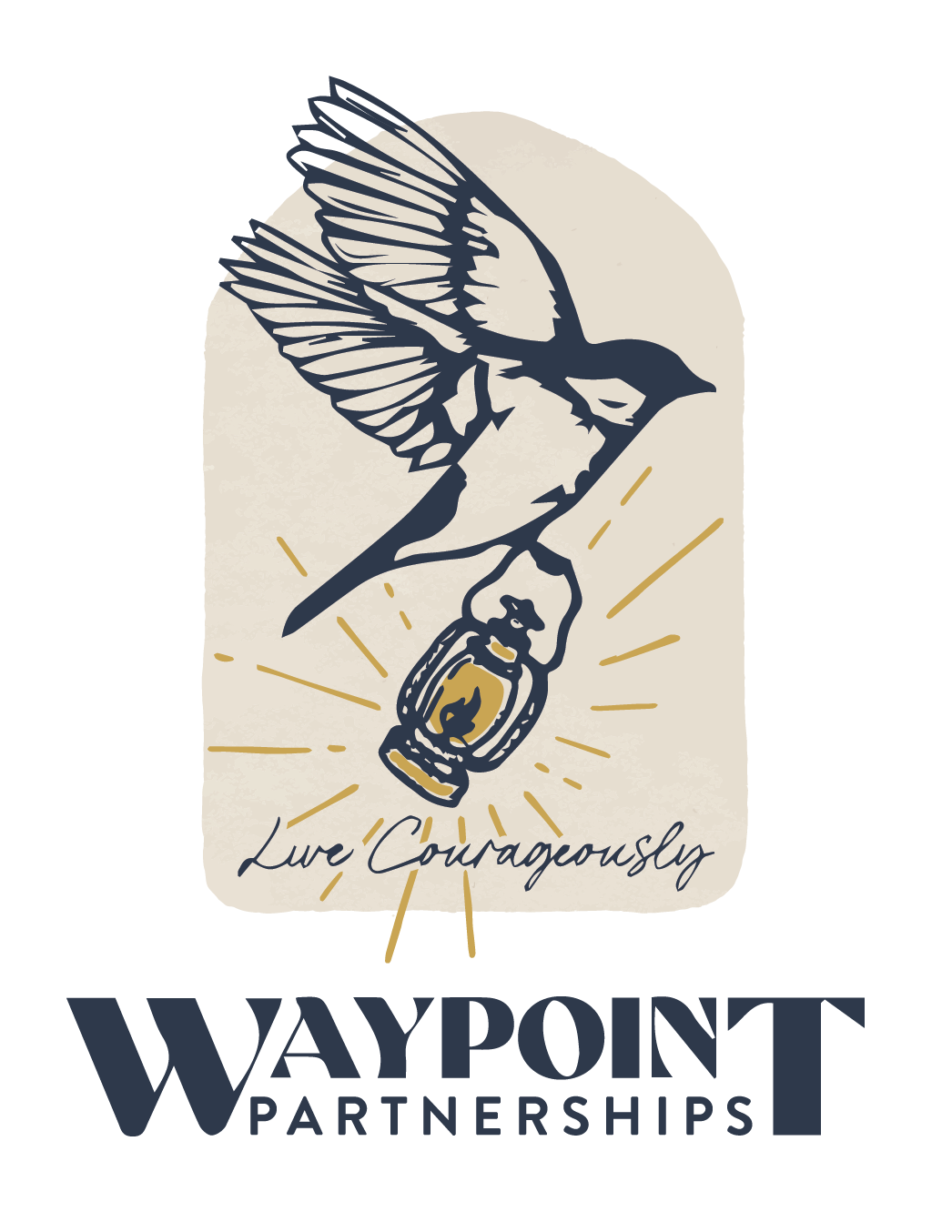Walk Thought: Unearthing Playfulness
“Whoever wants to understand much must play much.” - Gottfried Benn
“Walk Thoughts” are just as their name suggests - thoughts spurred on through time when my feet are grounded on the earth and my hair is blowing in the wind; moving in nature and being moved by nature. These are candid thoughts of mine (Dani) brought on by conversations with others, books, podcasts, music, or simply time of solitude. Though these thoughts are somewhat clinical in nature, they are held with an open palm, as they are designed to provoke MORE thought and may not be fully completed thoughts yet. Enjoy growing with me as we explore this together!
Recently, I had a delightful conversation with a client about the topic of play and the persistence of our need for play as we grow and change. It was so enriching that I asked if they minded if I spent time writing about some of the topics we covered, as I think it is relatable for so many people. Here is the result of that conversation and further self-exploration.
To start, I feel a bit of self-disclosure may be helpful for some context and connection to my personal evolution of play:
If you would have told me 10… 5… even just 3 years ago that in this season of my life I would be developing a business centered around walking outside, I would have laughed (probably my uncomfortable, “Oh, that’s nice… but no” sort of laugh) and then diverted the conversation in total disbelief. And yet, here we are!
Playing outside was not foreign to me as a kid. Growing up, I would spend hours upon hours on my Carolina Tar Heels-blue Diamondback bike pacing up and down the driveway creating fantasies in my mind and playing them out day, after day, after DAY. No matter the weather - after school, church, or during what would be considered an early morning for most kids my age - I was outside making my rounds up and down our slick black driveway.
This didn’t end until around when I entered high school, when my outdoor play took a turn towards my more serious, competitive side. I, then, spent hours shooting hoops rather than gliding around on my two-wheeled Mustang. Even still, the spirit of play lived on. I would crank up my music on my classic iPod with my dirty white wire headphones and spend hours getting lost in my imagination. Once my dad got home from work, we would often engage in family play outside; throwing frisbee or football, hitting a whiffle ball, badminton (with no net, just volleying as long as we can), or random creative games that my dad would come up with on the fly, were just the beginning of the ways we would play together.
While in college, I did spend some time outside, still often times in any weather conditions. Only now I was more inclined to spend that time in stillness either on a picnic blanket studying or sitting on one of Messiah College’s Adirondack style chairs to do some reading and journalling. This no longer felt playful; it was very intentionally functional. Even still, it was a healthy way to reset. My main source of play was at that time came in the form of visual art. Making art involves a lot of the same inherent elements of play: risk, vulnerability, patience, curiosity, imagination, intuition, and organic problem solving.
Largely, I was using art as the latter: a solution, with the “problem” being the limitation of language to express oneself. It was a journey towards understanding, like the Gottfried quote, “Whoever wants to understand much must play much.” At first, art (particularly finding my love for the process of drawing with chalk pastel on wood, as shown in the image gallery below) was both playful and expressive. However, over time and with the gradual increase in pressure due to the format of academia, I noticed my art become stale and a means to an end - a means to a degree. Unfortunately, the allure died off, and the playful spirit behind making it did, as well.




I would say that for a decent portion of time between college and graduate school, I did not play much. Truthfully, I lost sight of the value of play and my balance was misaligned. And then, I found running. Shortly thereafter, I found the trails. Though I won’t bore you (right now) with that story, I now find the essence of play in my time in the woods; sometimes in racing, almost always when adventuring with friends, and certainly when I try something new, scary, or even borderline “crazy.”
I share these experiences as a life-map to show that play can be part of our human instinct throughout many seasons of life (not just childhood). I’ve noticed that generally speaking, as we age, our freedom of play is decreased as our “play” increases in structure and functionality. We may believe that our play needs to have “purpose,” be “practical,” or generally feel justifiable by some measure.
However, like rings on a maturing tree, our ring of pure play as a child never disintegrates. It remains deeply embedded in the core of our being. I believe it is our charge and challenge as older youth, adolescents, young adults, and continuing throughout our entire adulthood, to unearth our innate playfulness. It is a process of rediscovering of our willingness…
to stumble,
to fail,
to try,
to not know the answers… or even the questions,
to play as play, not for function but purely for the sake of play,
or even to play without even an awareness that it is play,
to let go of intention and explore unadulterated flow.
Like a skillful archeologist carefully uncovering an artifact preserved within the earth, we can deeply reveal and encounter our roots of play.
This reminds me of times when I would metal-detect up in the mountains of Juniata County with my dad and sisters at the base of an old homestead. When we would uncover a larger find, we would sometimes have to dig from different angles to expose more and more of the object before being able to safely pull it from the ground. In some ways, this is like the evolution of play as we grow and change. Though in the past, we have accessed the spirit of play from one angle, novelty and curiosity are also important elements within play. Therefore, we may have to dig from a different angle in order to reach a new relationship to play as we mature.
I have also noticed the overlap between “play” and “practice.” As a toddler, we explore the world through experimentation with our senses both as a means to play and to interact and practice with the world around us. In older phases of development, we separate “practice” from “play” in activities like sports, where one leads to another, creating synonymous meaning between “play” and “perform.” What I am coming to find is that all of life is practice. Our relationships - seasonal, long-lasting, surface, or deep - are all a form of practice - molding and shaping us through experience. If there ever came a time where we had to “perform” in regards to being in relationship with others, I feel that would carry with it a flavor of inauthenticity.
The problem, and often the struggle, is that almost inescapably in play and in practice, learning is occurring. Learning, most times, arises out of making mistakes. And frankly, people don’t like to be on the receiving end of our “practice” (and therein, the receiving end of our mistakes) in relationship; it is uncomfortable and straining.
But, what if…
What would happen if we could approach each day with a spirit of play - the acceptance that just like the toddler who stumbles around making messes at every turn, both you and I are learning through all of our relationships?
What if we had more grace for our friends, family, even brief encounters with strangers and recognized that deep inside of them, just like deep inside of myself, is a common desire to play - to understand?
What if we checked-in with ourselves about what helps us feel closer to play? And did not judge ourselves if our need for play and mode of play changes from season to season, as I described in my own story?
What if we placed the same amount of value on play as we do work and rest?
What would happen if we acknowledged when we made a mistake to others, taking ownership of when our play and practice has a greater impact that goes beyond just ourselves?
I do not necessarily have, nor feel that there needs to be, a direct answer to these questions. But my encouragement to you is to consider each one. Maybe even spend some time with those close to you exploring these questions together. And ultimately, consider…
How are you playing today?

